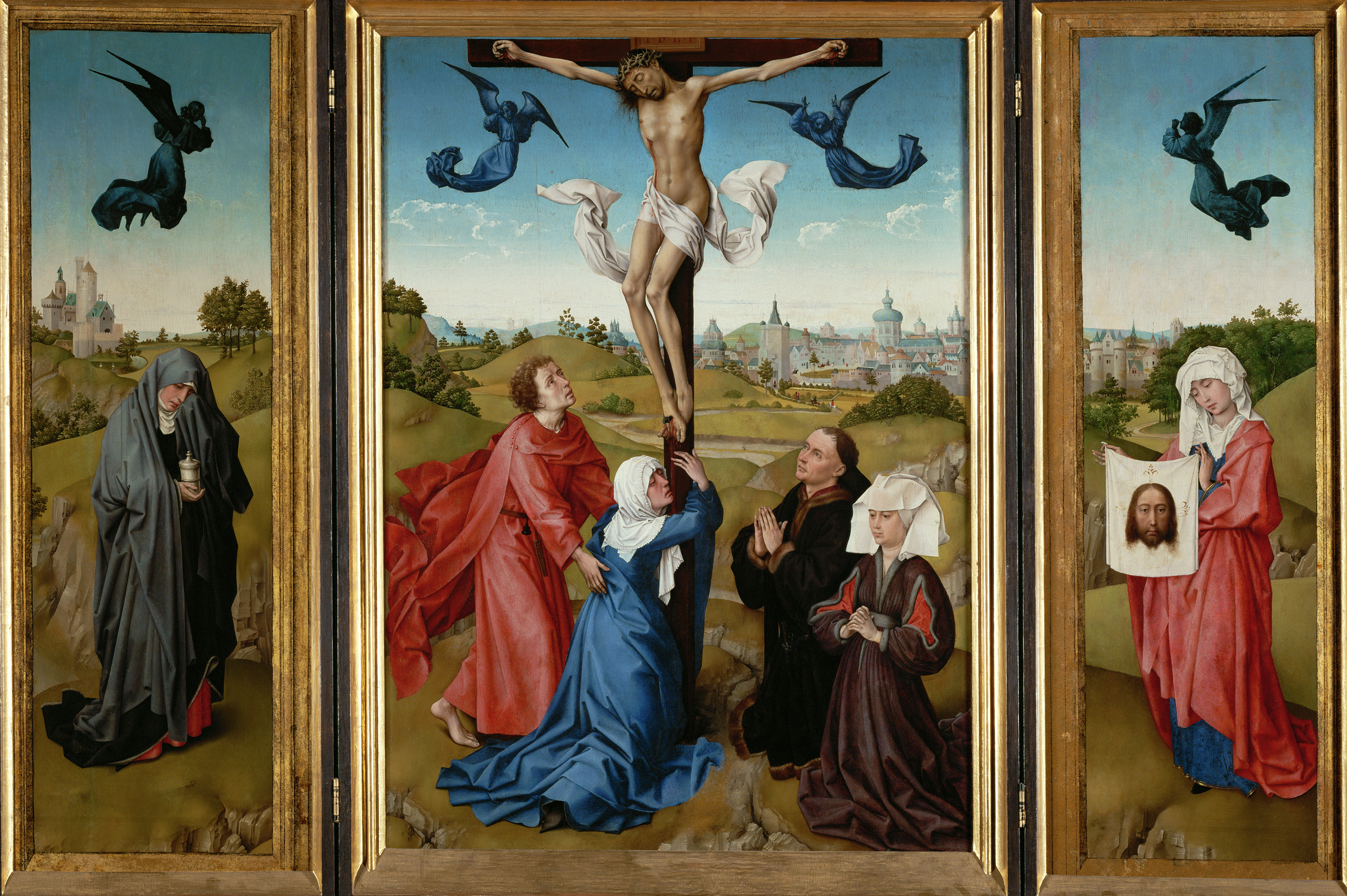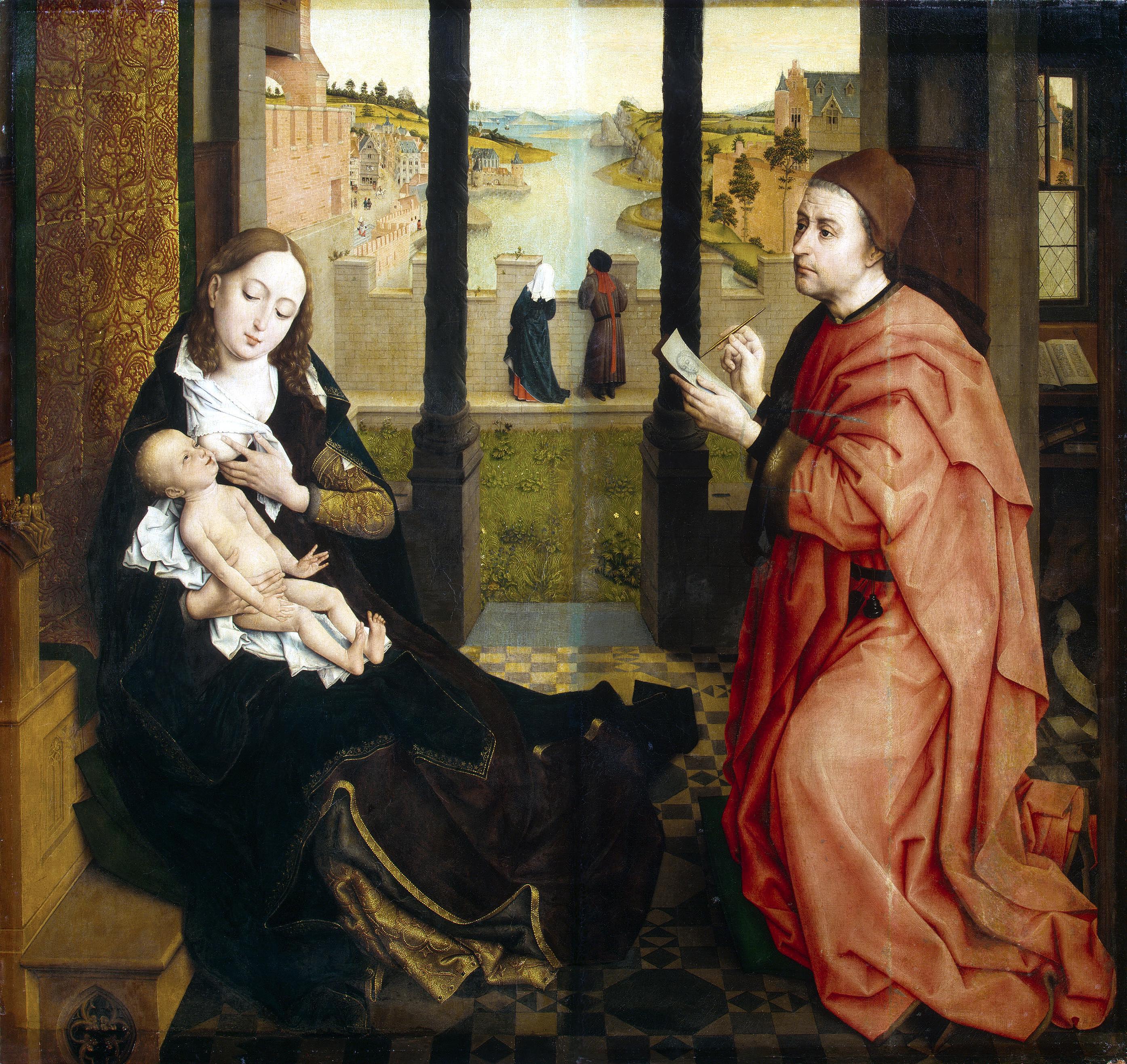Today we present another piece from the collection of the Kunsthistorisches Museum in Vienna, as we will do every Sunday for another three weeks. Today it is this van der Weyden triptych. He was an Early Netherlandish painter, a creator of religious triptychs, altarpieces, and commissioned single and diptych portraits. He was highly successful and internationally famous in his lifetime.
Along with Jan van Eyck, Rogier van der Weyden dominated Netherlandish painting in Brussels in the first half of the 15th century, working both for the Burgundian court as well as for the urban patron class. We know that in 1450 he undertook a pilgrimage to Rome. The Vienna painting, however, was created before this journey to Italy, which in the following century was to set the standard for artistic training. Today this Crucifixion scene is spread across a winged altar, but it was probably originally a single panel, with the “frame” only painted onto it. Not long after it was created, however, the work was sawn into three parts, making the portraits of St. Mary Magdalene and St. Veronica wings of a triptych.
Given its original condition, it makes van der Weyden’s artistic innovation even more significant: For the first time he unites all of the participants — the Crucifixion group, the saints, and the donors — in front of a continuous landscape, in which an idealised Jerusalem appears on the horizon. The realism of such a unified space had never been attempted in earlier works. Their identities unknown today, the patrons are separated only by a conspicuous fissure in the ground from the central subject of religious contemplation, a concept that was so progressive that it was initially attenuated in the paintings of the period that followed. For a long time afterwards, the donors, accompanied by their patron saints, were depicted on the wings of the altar. And there is a second innovation as well: Christ’s loincloth, which seems to be blowing in the breeze. It became a motif frequently employed in Netherlandish and German painting.
See you tomorrow!




Triptich: The Crucifixion
oil on wood • centre panel: 96 x 69 cm,
side wings: 101 x 35 cm each
 Rogier van der Weyden
Rogier van der Weyden